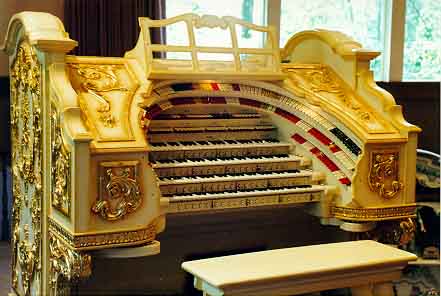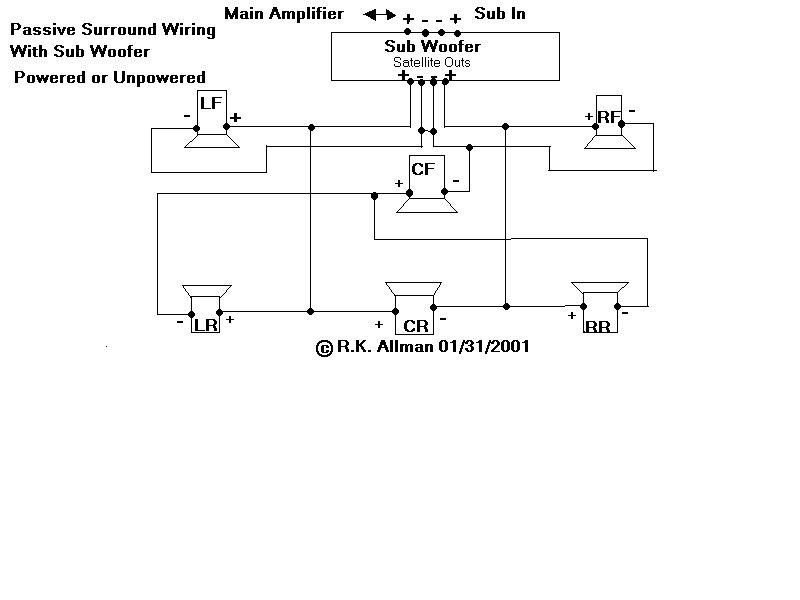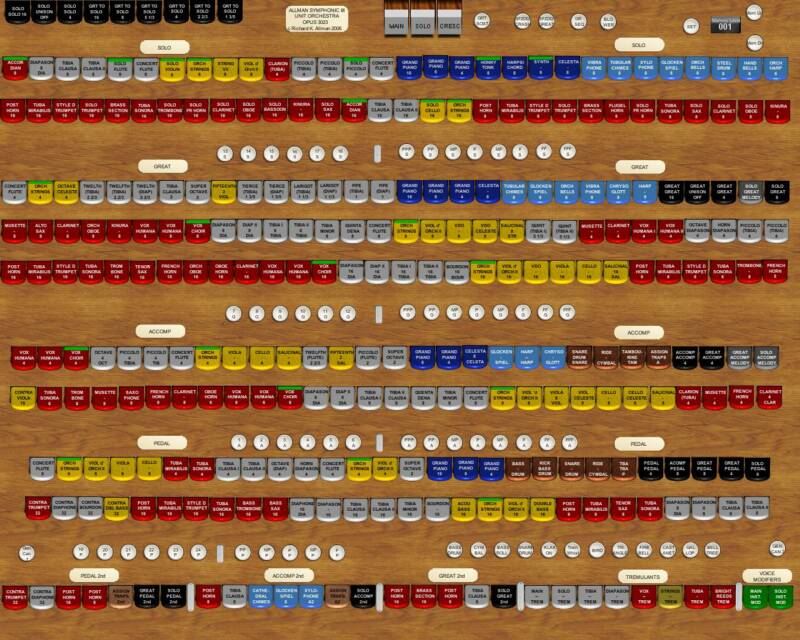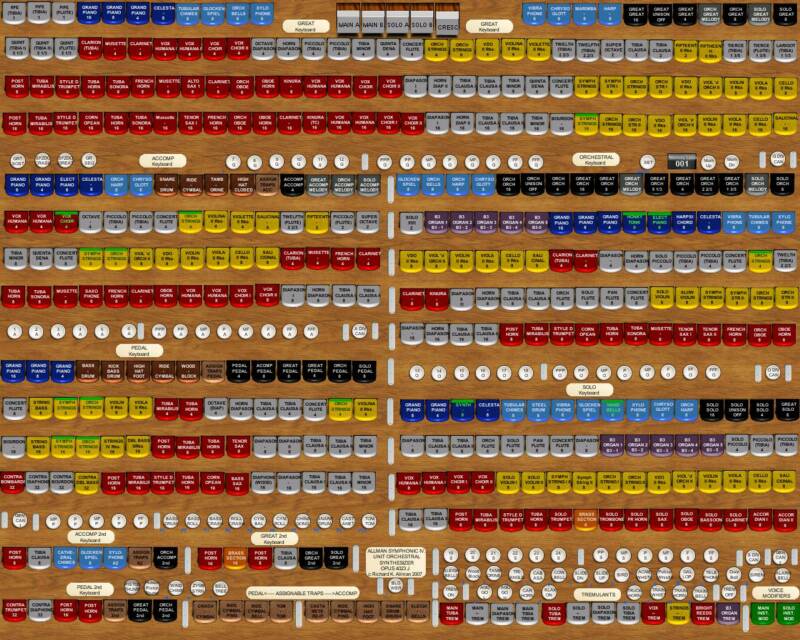 | ||||
This page was last updated on: May 21, 2008
Allman Music Sells Discount: Baritones / Euphoniums, Bassoons, Bugles, Cellos, Clarinets, Cornets, Flutes, French Horns, Flugel Horns, Keyboards, Oboes, Saxophones, Sousaphones, Tubas, Trumpets, Trombones, Violins, and Violas from: Amati, Bach, Barclay, Barrington, Besson, Blessing, Bohland-Fuchs, Buffet, Cerveny, Conn, Gemeinhardt, Getzen, Hofner, Holton, Iolite, Jupiter, King, Keilwerth, Maestro, Monique, Olds, Paesold, Schreiber, Schroetter, Selmer, Steltz, Stevens, Stowasser, Strunal, Winston and Yamaha
If you experience any problems with this Web site
Please notify us at: webmaster@allmanmusic.com
Product Index:
Speaker Repair
Home, Pro & Car Audio
Email For:
(c) 2000-2007 Advanced SuperiorTechnologies Inc.
All Rights Reserved
Allman Music Sells Discount: Baritones / Euphoniums, Bassoons, Bugles, Cellos, Clarinets, Cornets, Flutes, French Horns, Flugel Horns, Keyboards, Oboes, Saxophones, miditzer, virtual, organ, Sousaphones, Tubas, Trumpets, Trombones, Violins, and Violas from: Amati, Bach, Barclay, Barrington, Besson, Blessing, Buffet, Cerveny, Conn, DEG, Emerson, Gemeinhardt, Getzen, Hofner, Holton, Iolite, Jupiter, King, Keilwerth, Maestro, Monique, Olds, Paesold, Schreiber, Schroetter, Selmer, Steltz, Stevens, Stowasser, Strunal, Winston and Yamaha Discount Professional Sound Equipment by: Eminence, Electro Voice, Lynx, Nady, Peavey, Pyle
Miditzer, jOrgan, Virtual, Midi, Theater Organ, Theatre Organ, Hauptwerk, Classical Organ, Electronic Organ, Synth, Synthesizer
2, 3 and 4 Manual JOrgan, Hauptwerk, Miditzer Key Desks with Pistons and with true 2nd Touch Keyboards.
1 up to 2 Full Bolster + 2 - 1/2 Bolster S.A.M. Stop Rails for Virtual Organs and Console Upgrades.
RELATED LINKS of INTEREST
Virtual Theatre Pipe Organ Speaker Concepts
The Theatre-sf Group is all about Virtual Theatre Pipe Organs


The SymphIV Group is for people using or interested in using the Allman Symphonic or Theatre Series of jOrgan Consoles
Getting your Virtual Theatre Organ to sound realistic is the subject of discussion on many lists, however, I don't think that any of the approaches I've read so far really solve the problem.
Here is the primary problem as I see it: First, all sampled theatre organs no matter whether they are virtual or one of the name brand organs use dry samples which are usually recorded very close to the pipes with little or no room reverb to blend or smooth out the sound. These samples are then played back through conventional speakers in a realatively small room. What you hear then is about the same as if you were standing in front of the swell shades of a pipe organ installed in your room. Not necessarily a nice sound no matter how good the pipe samples are. The majority of the Theatre organ sounds we cherish so much come from hearing organs played in a good sized theatre or auditorium which has echo, reverberation and has chambers that are located 20 to 60 feet away from and above us. When the sound from either or both chambers reaches our ears it has had a lot of space and time to mix and blend together along with having the natural reverb of the room to smooth out the sound. OK, so all we have to do to solve the problem is to have a 1000 seat theatre to play our digital organs in......hmmm somehow I don't think this approach will work for most of us. :)
One approach that is highly touted is to use a large number of speakers with a lot of audio channels. Although this will improve the raw sound somewhat, it does absolutely nothing the solve the primary problem unless they are installed in a theatre or a huge room.
All right then, how do we recreate the sonic physics of a movie theatre in our living room to play our virtual organs in? Ahhh, did I hear you say convolution reverb? Closer but still not enough by itself. With most of Convolvers you still have the problem of the primary front speakers spitting out raw audio while the surround speakers faithfully reproduce the selected theatre acoustics. Better, but still no golden ring yet. What is needed is to think in terms of what your ears need to hear and when they need to hear the sound in relationship to each other.
The first thing that is needed is to position speakers at key locations that can deliver the sound from the direction that our ears expect to hear it come from. (See the Basic System below) The next requirement is to process the sound to blend it and add approriate echo and reverb then send it out to the proper speakers. With the basic system shown below the left and right front speakers need to have audio that has been diffused with some echo, delay and reverb, there shouldn't be any "Raw" audio from them at all. The middle L&R "Echo speakers" need to have a lower volume opposite channel sound with diffused reverb with a little more delay sent to them. Note: The middle "Echo" speakers reproduce the reflection that you hear from the wall opposite of each chamber. The rear surround speakers need to have the lowest volume diffused reverb and echo with the highest amount of delay. The amount of reverb length, room size, decay and echo are all personal choices of course. I recommend that you start with a small amount of each and build up a little at a time until you get the desired sound you're after. With this system you will need 6 audio channels and 3 separate reverbs to process the stereo output of your sound card to make it work. At a minimum, low cost stand alone reverbs in the form of a guitar pedal plug ins can be had for modest amounts under $40. Of course Alesis and other higher end reverbs will cost much more.
----------Basic 6 Channel System----------
: Subwoofer :
: (Main) (Solo) :
: Left Right :
: :
: :
: :
:Right Echo Left Echo :
: speaker Speaker :
: :
: :
: :
: :
: :
: :
: :
: Left rear Right rear :
: reverb reverb :
------------------------------------------------------
Below is a modified 2 channel system I designed based on a stereo design I did over 37 years ago which was orginanlly influenced by the Hafler / Dynaco Passive Ambient Phase Recovery System. This system is deceptively simple but works extremely well with just 2 channels of reverb audio fed through them.
----------Basic Passive 2 Channel System--------
: Subwoofer :
: (Main) (Solo) :
: Left Front Center Right :
: :
: :
: :
:Right Echo Left Echo :
: speaker Speaker :
: :
: :
: :
: :
: :
: :
: :
: Center Rear :
: :
--------------------------------------------------------------------
See the Schematic drawing below. Note: You'll need to swap and move the two L&R rear speakers up to the front 1/3 of the room.
With this system you can use the built in reverb of your sound card or soft synth.
Here is a dual Stereo variation on the first system where you have L&R speakers for each chamber. You will need to mix down each chambers audio to 2 channels each to send to the Echo and Rear Speakers.
-----------------------------------------------------
: sub sub :
: "Main" "Solo" :
: Left Right Left Right :
: :
: :
: :
:Right Echo Left Echo :
:Speaker Speaker :
: :
: :
: :
: :
: :
: :
: Left Rear Right Rear :
: :
----------------------------------------------------
The Exponential horn has an excellent ability to accelerate the low mass diaphram rapidly and reproduce the leading edge of a signal extremely well, however, when used by itself, the sound is hollow and tinny on signals such as the Tibia, voice or any signal with a longer duration wave. The standard cone speaker on the other hand has a great deal of mass in the cone and imparts that warm full sound to long duration signals but has a very poor ability to accurately reproduce any signal with a sharp leading edge. The cone speaker is also more prone to intermodulation and harmonic distortion, especially when driven hard. I've found when you combine the horn with the cone drivers in balance with each other you get the best of both worlds. The result is an extremely clear warm and open sound with tremendous presence. Another benefit of parallel drivers is not as obvious. Since both drivers are being used together in parallel the amount of drive required for each speaker to achieve a given SPL (sound pressure level) is greatly reduced with a coresponding reduction in IM and THD. When you repeat the process for the tweeters you end up with speaker arraingment that accurately reproduce any signal you put in to them without having to spend a small fortune. The only other speaker systems I've found to do a better job of reproduction is a system that uses a closed loop electical feedback system to correct the signal for the each drivers errors. Unfortunately this type of system is prohibitively expensive and generally not available commercially.
Once I had the driver issue solved to my satisfaction, the next problem was the crossover. In an ideal system each set of drivers would be fed by their own amplifier using electronic crossovers to break up the spectrum across the different drivers. Again this is expensive and cumbersome to implement in an average home. That left the passive crossover as the next best choice. Unfortunately conventional passive crossover designs IMO are not very good. The conventional design uses a seperate sets of componets to crossover each set of drivers. For example the woofer crossover would use a series inductor with a capacitor in parallel with the woofer driver for a 12 db / oct crossover at a given frequency. The Midrange would use a cabacitor in series and an inductor in parallel with the midrange driver to cross it on at the crossover point. This process is repeated for each crossover point needed. Although you can calculate the values of each set of components and have a flat crossover point under ideal conditons, there is a major problem when any aspect of any of the components changes. Such things as manufacturing differences in the drivers voice coil motor assembly along with the passive component value tolerences alone can cause the crossover point to deviate and cause a hump or a dip to occour at the output from the calculated value. The other factor largely ignored by most is that electromechanical components can change their value as they heat up when in heavy use. This again can cause a shift in the crossover point. When you consider that a minimum of a 3 way, preferably 4 way crossover is needed for a good speaker design, the crossover issues are compounded. In addidtion, the conventional crossover design can have phase errors induced by component aberations.
My solution for the passive crossover, (See the Drawing Below), was not to duplicate the crossover components for each set of drivers, but use the same components that cross one driver over to cross the next driver on. It was such a childisly simple solution that solved all of the principle problems with standard passive crossover designs. There are of course other factors with passive crossovers such as the "Q" factor and hysterisis of the components that come in to play but are easily dealt with by using high quality components for the most part. Although a passive crossover isn't a perfect solution to the problem, it works within the constraints I mentioned before. The end result is that I can have a 4 or 5 way 12 db/oct crossover system that will always have a perfect crossover point no matter what happens to the value of any of the variables. A side benefit of my design is that there is also less phase distortion at the crossover points than with the conventional design crossover.
The next problem I tackled was the driver protection aspect for those "OOPS!" situations. I developed a simple system that in the event of an overload will switch in additional resistance for the affected driver(s) until the overload is reduced.
I may be a little biased, but IMHO I have yet to hear any 2 kilowatt system for under $15k that sounds as good as the system I proposed on the Yahoo VTPO forum.
The bottom line is that I believe that a good stereo sound stage in each chamber along with the necessary reverb speakers can accomplish the lions share of the reproduction needs of the average VTPO with very little compromise. My ultimate solution would be to have 4 stereo pairs in each chamber, one stereo pair for each family of tone plus the associated reverb channels, however, I'm afraid the SAF (spouse acceptance factor) just isn't there yet. :)
If you think that only a few speakers and a simple surround system can't be used to make a VTPO sound realistic, think about the last time that you listened to a good professional recording of your favorite artist through such a system, it sounded pretty darned good didn't it? That's what you're shooting for with your VTPO setup. With half way decent samples, there certainly isn't any reason you can't make your MidiTzer or jOrgan sound at least as good as a properly recorded real theatre organ! Now as for the ability to play it like a professional....I just need to figure out how to get my fingers to virtually play like Don, George or Tom and I'd have it made.
Of course you can add as many channels of audio and speakers that you want but you need to be sure that you diffuse and lightly reverb the audio to the front channels before you do anything else.
Best Regards,
Kent







